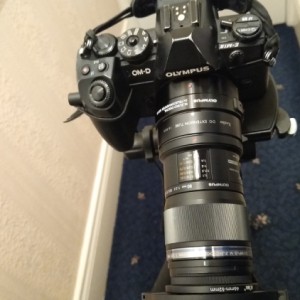Super Macro
I have a bit of a reputation for macro shots of deceased flies - so apologies for anyone who doesn't like such photos, please feel free to look navigate away now!
I'm always striving to get closer and closer to my "quarry", and recently came across a technique which was new to me, using only equipment I already had (see below* for techy detail if you're interested). So today I put it to the test. I still need some more practice but this is the result I achieved today. The subject is a typical UK housefly so the eyes are only about 1mm across.
*Techy detail. I found out about this technique from an Olympus Youtube video here. The setup is as follows: Olympus MC-20 2x teleconverter on the EM1 Mk2 camera with a 16mm extension tube on the teleconverter (my tube is a Kenko one: others are available but I can't guarantee that they'll fit: it was a tight fit but I didn't need to modify the tube at all - the guy in that video had needed to do so). On that is the Olympus 60mm Macro lens and finally the Raynox DCR-250 macro lens. This shot was focus bracketed in-camera to produce 30 layers at the minimum displacement between shots - ie 1 on the 1-10 scale), then focus stacked in Affinity software. (The Olympus can only stack a maximum of 15 shots but can bracket 999!!) The extra is a phone shot of the camera as set up. (Note: I confess that after the stacking I did do a bit of sharpening using Topaz AI Sharpen.)
I'll certainly be trying this again - and might not always use a fly as my subject! I'd love to think that eventually I'll get something approaching the super macro photo currently featured in the blip Community Blog here, taken by blipper Stevvi but I've got a long way to go yet!
Thanks so much to cathy1947 for hosting TT this month.


Comments
Sign in or get an account to comment.


